Login
x 

CONCIERGE COLLECTION
OVERNIGHT PROGRAMS
DAY PROGRAMS
CONCIERGE COLLECTION
OVERNIGHT PROGRAMS
DAY PROGRAMS

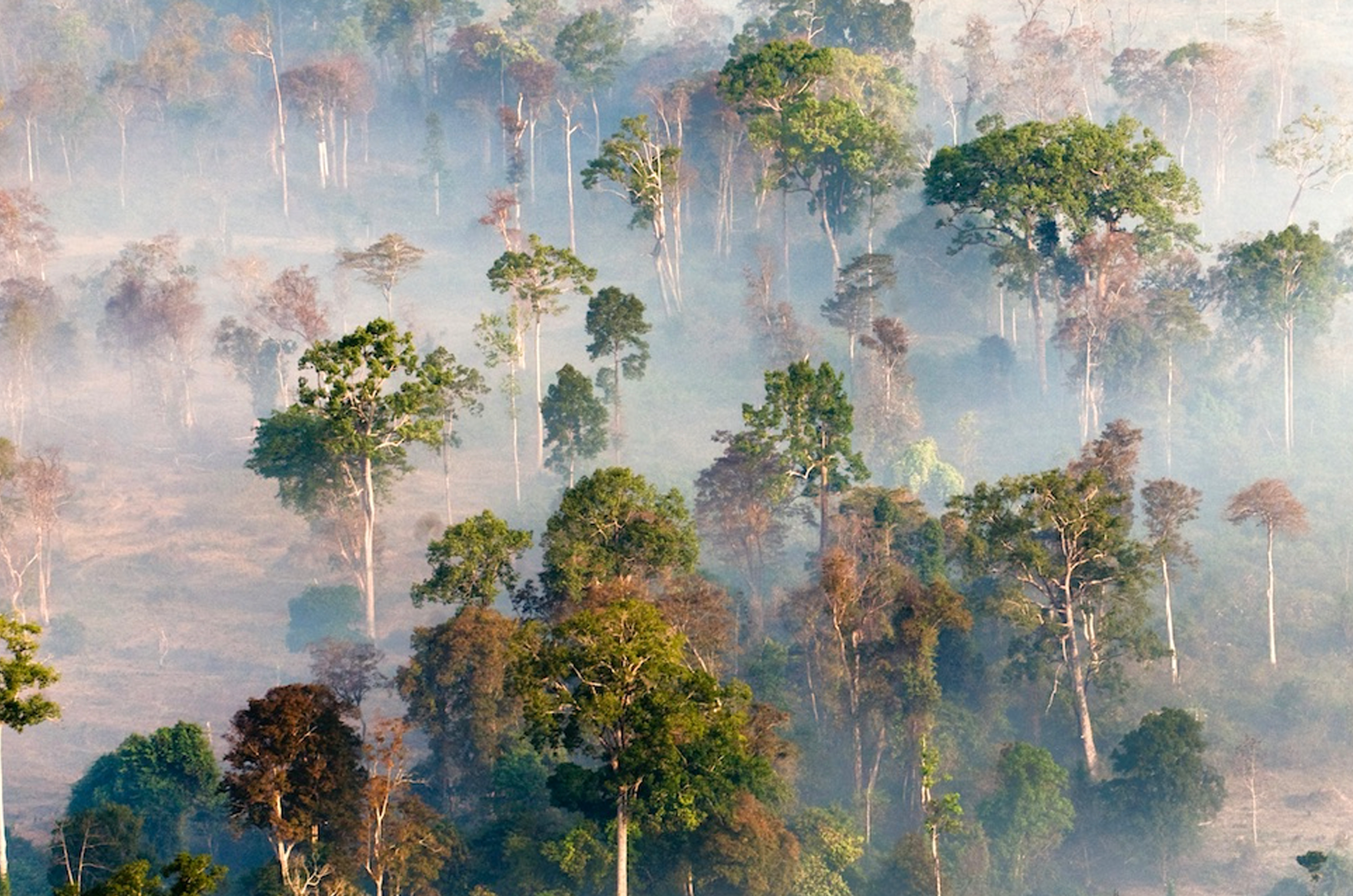
Cambodia is a tropical country located just above the equator–with a usual temperature range of 21 to 35 °C (69.8 to 95 °F). Hot and steamy would be a good way to describe the weather most of the year, although there are some notable variations. There is no harsh winter and in fact no winter to speak of at all but we always advise to bring a sweater or light jacket during the cooler months as there is a chill in the air whilst out exploring the temples of Angkor at dawn.
Cambodia primarily has two distinct seasons, dry and monsoon (that is, rainy). Within those seasons, there are also cool and hot periods. The standard view is that Cambodia has three seasons: cool season, hot season, and the rainy season.
Cool season: December-February
The weather starts to cool down in November and is actually very pleasant in December and January. These are the months to visit if you want to have consistently good weather in all locations and not have to be too concerned about the heat or humidity. The temperature in Phnom Penh ranges from 21 to 32 °C (70 to 90 °F), with Siem Reap slightly cooler than that.
Hot season: March-June
April is usually the hottest month of the year, when temperatures start to climb to 40 °C (104 °F). It’s called dry season, but the humidity makes it feel hotter than the temperature itself. During April and May in Cambodia, the heat can accurately be described as oppressive but if activity is constructed around the early morning or late afternoon then the heat is generally not a deterrent.
Rainy season (hot and cool): June-September, October-November
Although it can rain upwards of 20 days out of every month in rainy season, the showers are generally short (less than an hour) and predictable, usually happening in the afternoons. These bursts of rain usually bring some relief from the high temperatures in July through September. In October and November it is still raining, but the temperatures start creeping down, with average highs of around 30 °C (86 °F) and lows around 23 °C (73 °F). Rainy season is a great time to travel around Cambodia, as visitors are few and far between and the countryside at its most bucolic with lush green fields of rice as far as the eye can see.
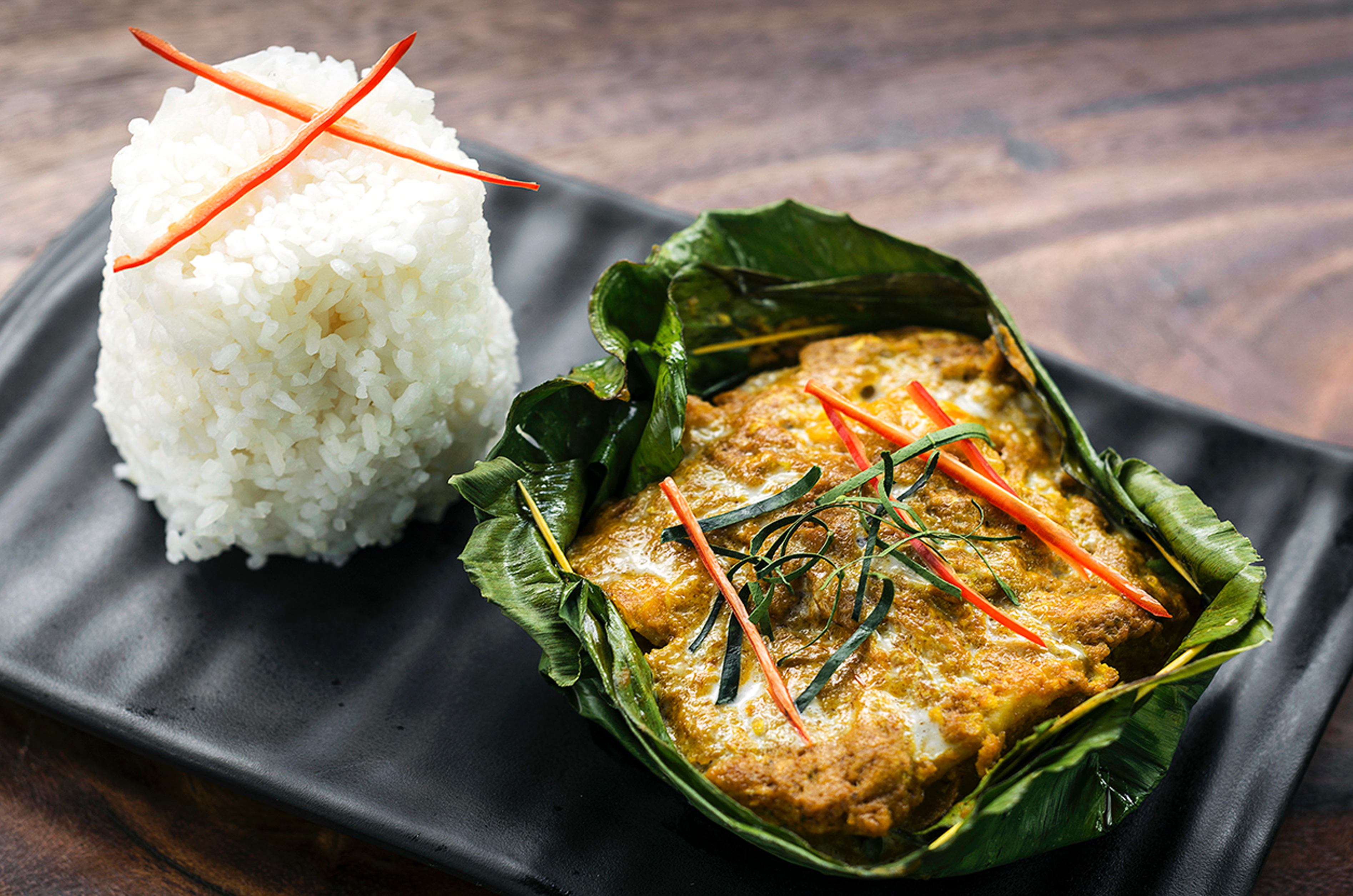
Khmer cuisine is often misunderstood by Westerners, who often visit Cambodia after Vietnam or Thailand and, observing some of the similarities between the three cuisines, expect Khmer cuisine to work in the same way as, say, Thai. For travellers completely uninitiated in regional Indochinese cuisine, arriving fresh off the plane to Cambodia, the misunderstanding may be even more intense as you may find the reality of a full spread of Khmer cuisine a little overwhelming.
Similar to Vietnamese and Thai food, Khmer cuisine aims to provide the perfect balance of sweet, salty, spicy and sour – but unlike the aforementioned cuisines, it does not attempt to achieve this balance per dish. Rather, a Khmer meal involves a wide range of small dishes and sauces, one of which may be hot, one salty, one sweet, etc – and it is up to the diner to achieve his or her perfect balance of flavours. Understanding this is key to having a delicious Khmer meal – if you expect to eat each dish one after the other, rather than mixing the flavours, you may be disappointed.
The first thing you’ll notice in Cambodia is the prevalence of rice – in fact, rice is so embedded in Khmer culture that Cambodians actually greet each other with “Nham bay howie nov?” – the literal translation of which is “Have you eaten rice yet?”. Every meal comes with a large serving of rice, and sticky rice is commonly eaten as a dessert. This is great for gluten-free diners, though vegetarians may have a trickier time with Cambodian cuisine – much of the menu is concerned with getting as much flavour from meats and fish as possible.
A good Khmer dish for vegetarians is samlor karko sap, typically made with pumpkin, green papaya, jackfruit, green banana and snake beans – but overall, vegetarians might struggle with the Khmer diet.
A few must-try dishes, though, are fish amok – this curry is often called Cambodia’s national dish, and seafood in the region is generally excellent, as Cambodia has an abundance of wetlands. Bai sach chrouk (barbecued pork and rice with garlic, soy and coconut milk) is a popular breakfast dish that is sure to appeal to Western taste buds, and lort cha is a delicious dish of short, fat rice noodles, greens, soy sauce and fish sauce. Sour fruit sprinkled with chilli, salt and sugar makes a tasty snack, otherwise there is an abundance of tropical fruits to be found in the local markets.
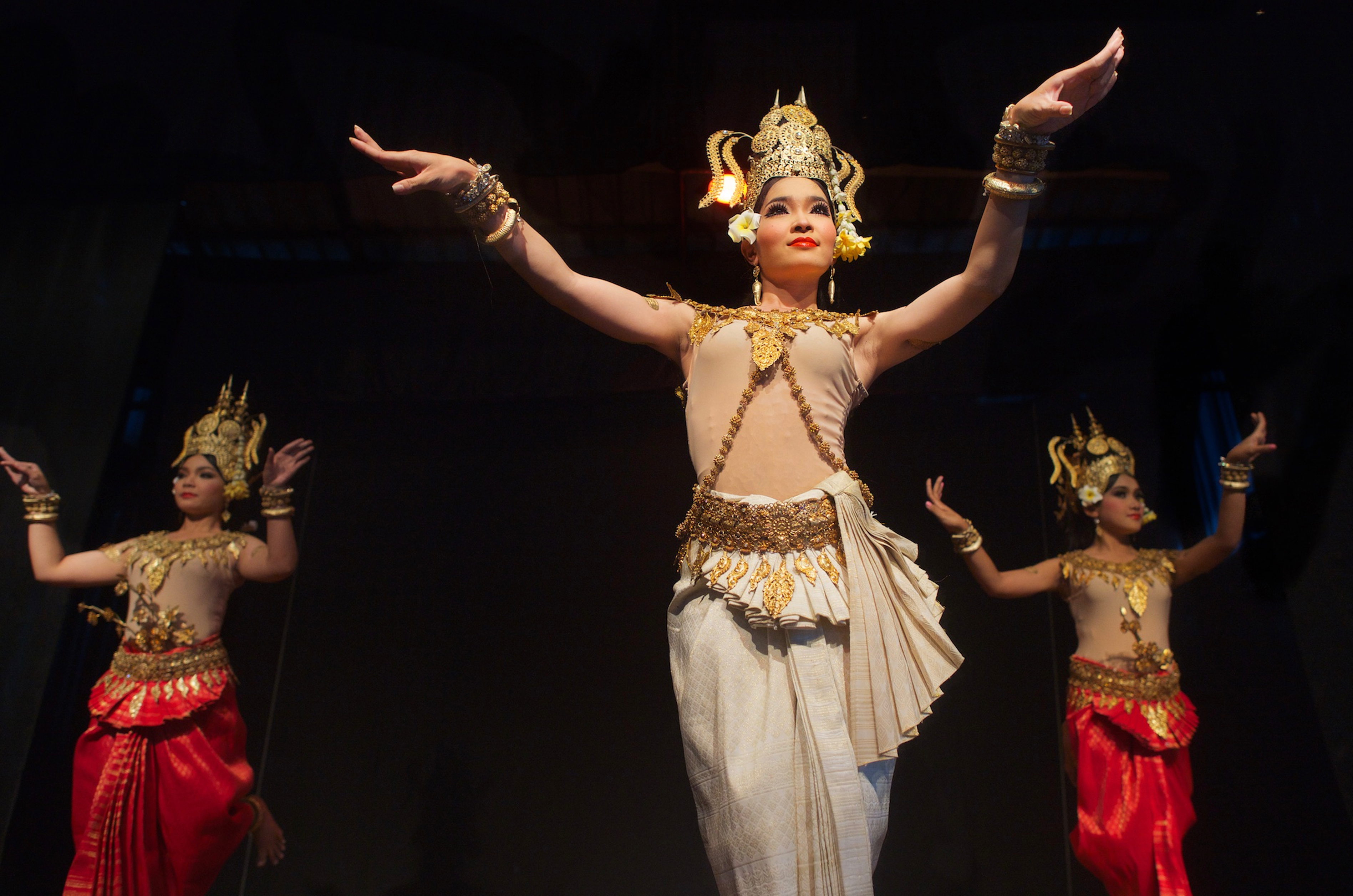
The population of Cambodia today is about 10 million. About 90-95 percent of the people are Khmer ethnic. The remaining 5-10 percent include Chinese-Khmers, Khmer Islam or Chams, ethnic hill-tribe people, known as the Khmer Loeu, and Vietnamese. About 10 percent of the population lives in Phnom Penh, the capital, making Cambodia largely a country of rural dwellers, farmers and artisans.
The ethnic groups that constitute Cambodian society possess a number of economic and demographic commonalties- for example. Chinese merchants lived mainly in urban centers and play middlemen in many economic cycles, but they also preserve differences in their social and cultural institutions. They were concentrated mostly in central and in southeastern Cambodia, the major differences among these groups lie in social organization, language, and religion.
The majority of the inhabitants of Cambodia are settled in fairly permanent villages near the major bodies of water in the Tonle Sap Basin-Mekong Lowlands region. The Khmer Loeu live in widely scattered villages that are abandoned when the cultivated land in the vicinity is exhausted. The permanently settled Khmer and Cham villages usually located on or near the banks of a river or other bodies of water. Cham villages usually are made up almost entirely of Cham, but Khmer villages, especially in central and in southeastern of Cambodia, typically include sizeable Chinese communities.
The religious landscape of Cambodia is similarly homogeneous with 96.9% of the population identifying as Buddhist. Numerous Buddhist principles – such as tolerance, calmness and taking responsibility for one’s own actions – are values found throughout Cambodian culture. .
Cambodians also tend to have a sense of attachment and pride for their family, village and district. Being a collectivistic society, strong emphasis is placed on honouring and being loyal towards one’s family. Cambodians rarely jeopardise the interests of the collective group and often take responsibility for fellow members. Moreover, one’s community or extended family is typically understood as more important than the individual. The individual generally has limited privacy and is expected to act for the good of their community in order to maintain harmony.
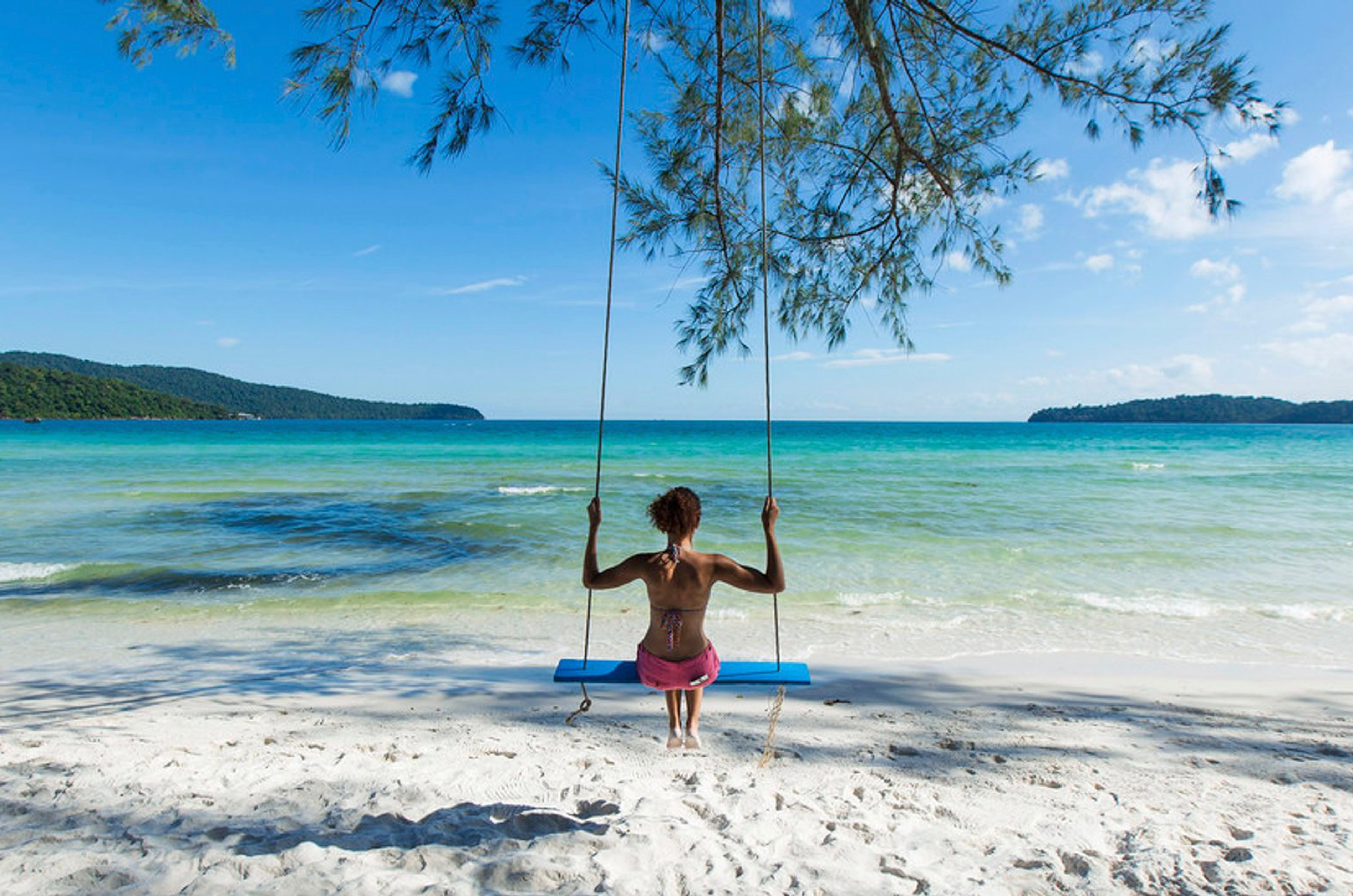
KEP & KAMPOT
KOH RUSSEY & KRABEY
Koh Russei (Bamboo Island) and Koh Rong can be reached by regular boat service from the mainland hub of Sihanoukville (there is no reason to stay in the town). Recent high end resort developments here (namely Koh Russey Villas and Six Senses) have led the way in tourism development amid deserted beaches, pristine ocean and forested hinterlands. The main scuba diving area is at Koh Rong Samloem, 22 km offshore from Sihanoukville, offering a perfectly unspoilt environment.
KOH RONG
Koh Kong lets you escape to a lesser-explored region on Cambodia’s west coast. It’s considered one of the country’s greenest provinces, with the lush and hilly slopes of the Cardamom Mountains meeting swathes of mangrove forests. The tented eco lodge of Canvas and Orchids sits on the Tatai River against its rainforest backdrop. For a beach escape visitors can take a boat journey out to the namesake Koh Kong island for an even more remote getaway at the Royal Sands Resort with private villas on a pristine stretch of ocean.
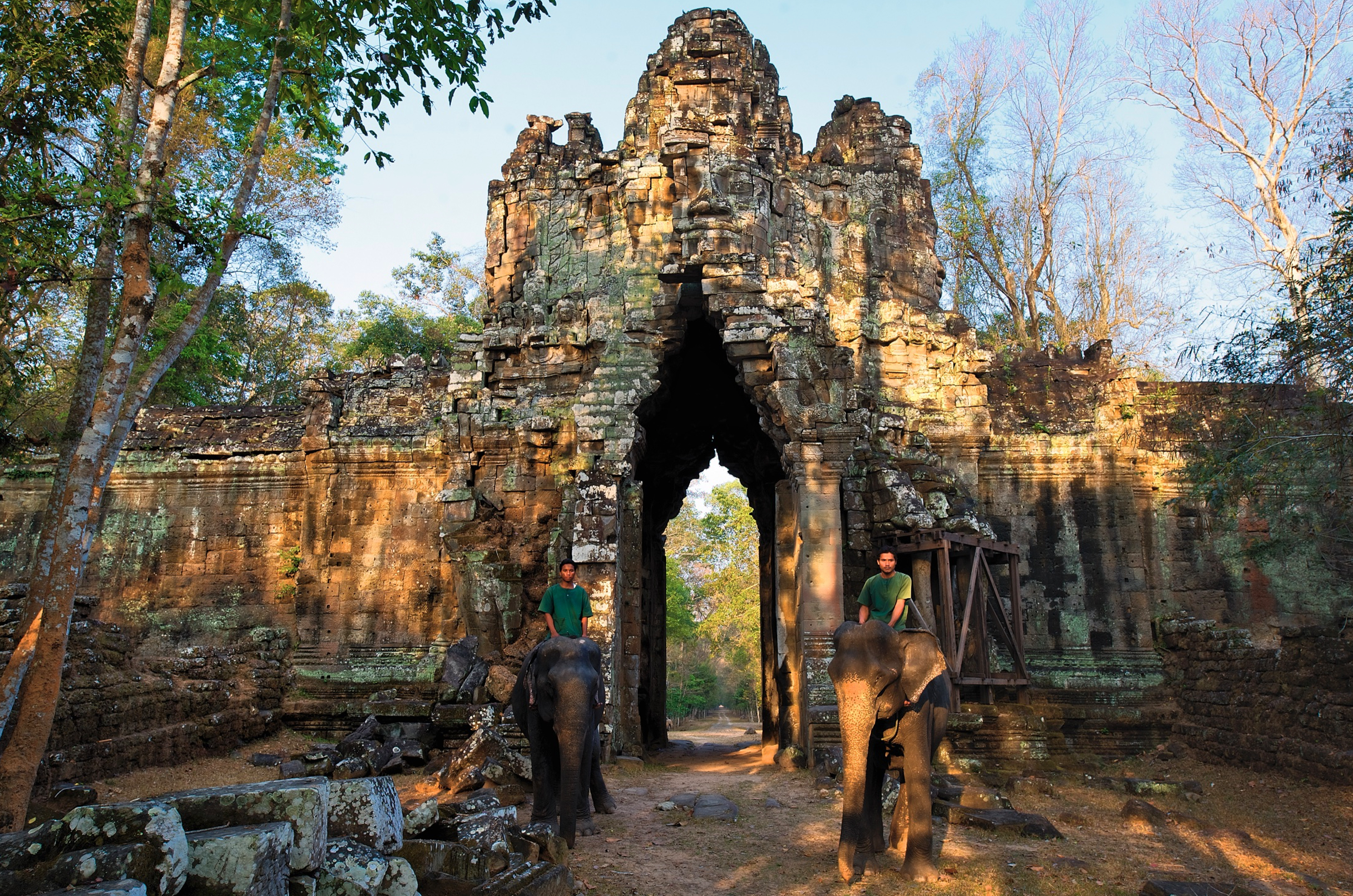
ANGKOR
Angkor Wat is the largest temple building from ancient times. But Angkor, located in Cambodia’s north-western province Siem Reap, is much more than this most famous single temple. Angkor is one of the grandest archaeological zones and one of the most exciting tourist destinations in the entire world. Nothing compares to Angkor. The numbers and sizes of both buildings and works of sculptural art, in a beautiful surrounding, are unsurpassed.
The Archaeological Park, stretching over 400 square kilometres of forested land, includes magnificent temple complexes of different succeeding capitals of the Khmer Empire from the 10th to 13th century. In its heyday this ancient town covered an area vaster than present-day New York. More than 700,000 inhabitants lived here, distributed over municipal and rural settlements, interconnected by roads and canals, forming the world’s largest agglomeration in the 11th and 12th century.
The sheer scale, complexity and cultural riches of Angkor are too vast to compile succinctly here but our carefully researched travel programs explore the region in depth and in a way that brings these vast monuments alive.
THE REMOTE TEMPLES
For those visiting Cambodia for a longer duration or simply wishing to explore further afield there are extraordinary temple sites scattered throughout the country, most notably within long drives from Siem Reap. The famed jungle temple of Being Melea and the remote former kingdom of Koh Ker are accessible as long day trips but deserving of more time. Far further afield with a five hour road trip, lies the massive Preah Khan Kompong Svay, Cambodia’s most remote temple and its largest in scale. Banteay Chhmar is another gem worth visiting west of Siem Reap and is now under the World Monuments Fund protection.
KOMPONG THOM
Last but not least there is a Cambodian jungle temple town even older than Angkor. Its name is Sambor Prei Kuk. It is within only one hour driving distance from Kampong Thom, which is located halfway between Siem Reap and Phnom Penh and therefore makes a convenient stopover when travelling between these two points. ,
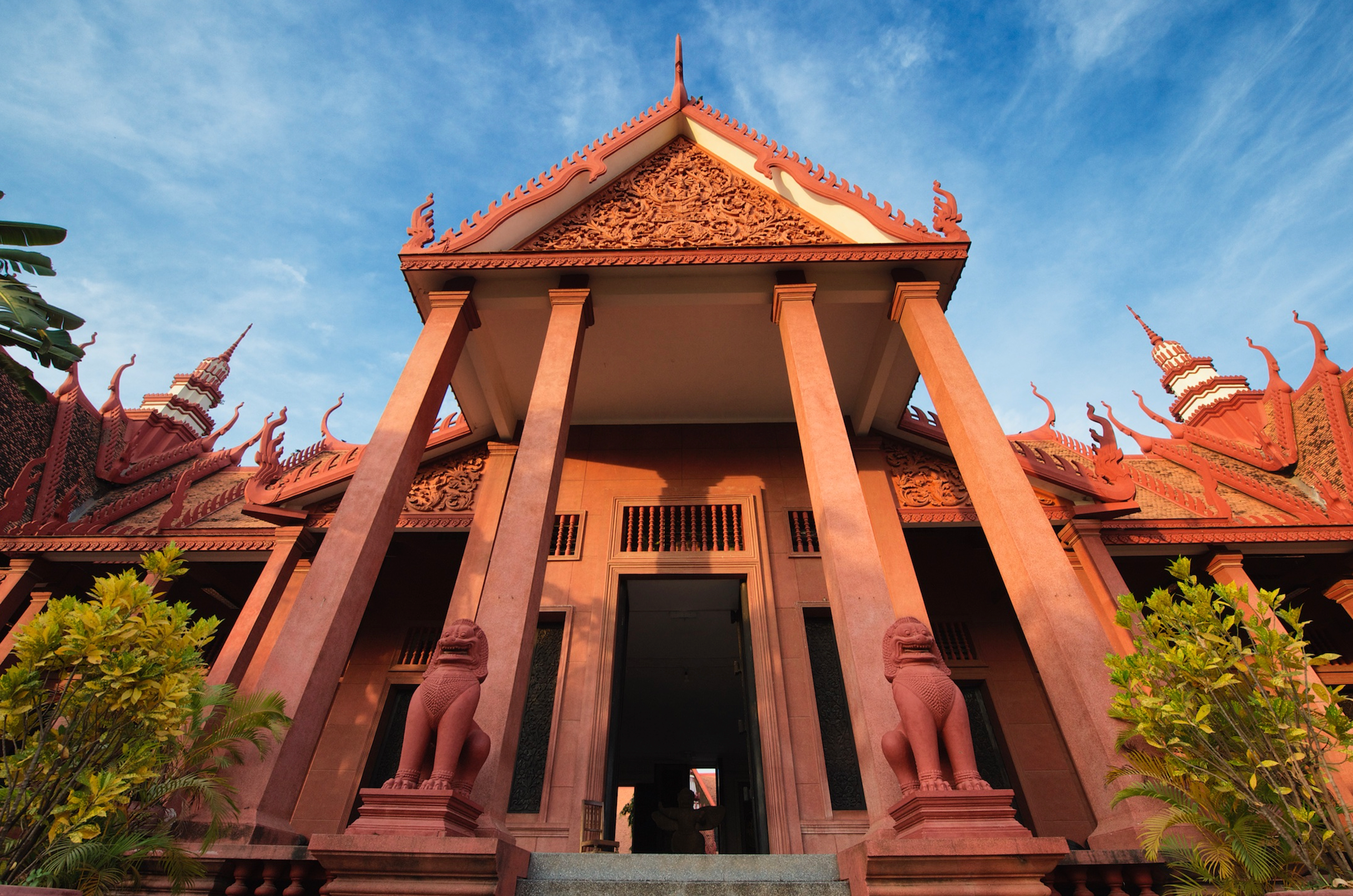
SIEM REAP
Siem Reap is much more than a capital of a province of the same name in northwestern Cambodia. Siem Reap is the tourist hub of Cambodia. The town centre is only seven kilometres away from Cambodia's landmark Angkor temple complex. But Siem Reap is an attraction in itself, with some colonial flair, many tourist and leisure facilities, cultural institutions and craft industry, local and international cuisine, busy markets and nightlife, tranquil pagoda compounds and green spaces along the Siem Reap river, it is a city well-looked-after compared to other towns in developing countries. Besides the attraction of the temples, there is rice paddy cultivation and marshlands and the Great Lake, with fishing villages, bird sanctuaries, crocodile farms and silk farms encouraging all visitors to stay a while longer.
BATTAMBANG
Battambang is Cambodia's second-largest city, with about 200,000 inhabitants and accessible as a drive from Siem Reap. Traditionally Battambang has been Cambodia's leading rice-producing province. Battambang's main attraction is the best-preserved French colonial architecture in the country with picturesque houses and shops from the early 20th century clustered along the Sangkae riverbank. There are also temples in the surroundings of the city, such as Phnom Banom and modern Wat Ek including structures that already date from the classical Angkor times. Battambang is a charming place to spend a few days to fully absorb its authentic provincial lifestyle.
PHNOM PENH
With a population of over 2 million inhabitants and the seat of government, Phnom Penh is the nation’s capital. The city is situated at the confluence of Cambodia's most important rivers, the mighty Mekong and the Tonle Sap, and at the fork of the two most important Mekong Delta distributaries at the same time, the southern arm being the Bassac river.
Modernising at a rapid rate with high rise towers and improved infrastructure, Phnom Penh still maintains considerable charm with plenty to see. Its French colonial history has left some striking architectural features as well as beautiful Khmer influenced design on its public buildings and hence is appealing for this alone. It is also a young, vibrant space with an active night life, innovative cuisine scene and a general laid back atmosphere.